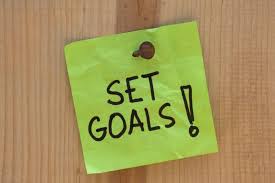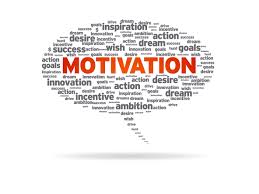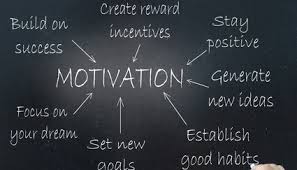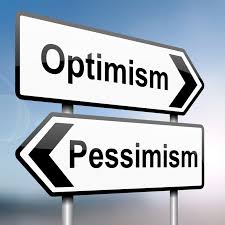Over the years, there’s been a lot of talk about finding your “best self.” It’s always spoken of as if the best you is out there somewhere, hiding in a different job or waiting around the corner for some life-changing experience.
But if you go through life searching here and there for your best self, you’re going to be disappointed. Let me let you in on a little secret: There isn’t any best self, and it’s certainly not out there waiting for you to find it. You’re you — right now, right where you’re sitting — and you already hold the perfection you seek. There’s no reason to go looking because you’re already here.
But while finding your best self is a concept that should join the square wheels of history’s outgrown ideas, activating the best version of yourself is a completely different story.
Reboot Your System to Start Fresh
Consider the operating system on your computer. There’s no such thing as the best one because new versions are always surfacing — it’s an evolutionary process. Each system goes through updates, fixes, and occasionally total reboots to work out viruses and bugs. With each fix and update, a better version is achieved.
Similarly, finding the best version of yourself is an ongoing procedure.
Like computers, people sometimes find themselves affected by behavioral viruses and other malfunctions. Maybe they were never given the proper input, their drives are over-functioning (think addiction), or they’re under-performing (think apathy). Whatever the case, recognizing which behavioral viruses have infected you is the first step toward “rebooting” yourself.
The reason your goal should be to reboot goes back to the idea that your best self is already present. You were born perfect, and to access your blueprints, you must tap into a moment or period in your life when you felt your best. Essentially, your aim is to find the source code for the best version of yourself, then boot yourself back to that point.
Zero In on Your Best Version
To discover the source code for your best version, you have to learn how to recognize it.
Think back on some of the best moments in your life. What was happening, and how did you know it was a great moment? Really take the time to consider this carefully.
Now, what do you notice about yourself in your best moments? Your first instinct might be to use vague descriptors, such as “I felt more confident” or “I was less shy,” but I want you to think about it in sensory and muscular terms. For example, “I felt a rush through my chest” or “I noticed that the whole world seemed clearer and brighter.”
That’s how memory works. As soon as you really dig into it, your entire system is brought online to help fully access the memory. This gives you a view of the structure of your best version. Maybe that means that your breathing slows or the tone of your voice drops — it’s the state that your body is in when you’re operating at your best.
It’s important to understand that this structure will be the same whenever you’re at your best. Once you realize this, all you need to do is tap into that state and make it a habit because that will drive your neurotransmitters, behaviors, and emotions to optimize.
The ‘Why’ and ‘How’
When you learn to stabilize the best version of yourself, you’re no longer a victim of the situation (e.g., the fact that it’s raining makes you sad, or since things don’t go exactly as you planned, you get depressed).
Yet, that’s how most people live — determining their internal states based on environmental conditions. That’s crazy, and you won’t operate at your peak performance until you realize that regardless of what’s going on around you, you’re still the same person under your skin.
You’re at your best version when you’re not running behavioral viruses. Therefore, you want to be virus-free all the time. When you are, your system is open, ready, and solution-seeking. But when you’re not, you’ll often be closed down and inhibited, focusing on your limits and how things aren’t going to work out.
You want a life that’s congruent from essence to action — one that supports you being at your best all the time, even when times are tough.
Use Technology to Build the Framework
There are a number of methods that people have used to seek and establish the best versions of themselves — from therapy to church to yoga to mediation. Different methods have their varying benefits and drawbacks, but in the modern world, we’re finding a number of technological solutions that can help build a solid framework for the best versions of ourselves. Here are two examples:
- Functional Assessment: If you had unlimited funds or a buddy working in the imaging lab at MIT, I’d tell you to get an fMRI scan. But there’s an affordable alternative called a functional assessment. This measures the various networks in your brain and gives you a clearer picture of your thought processes.
- Biohacking: There are a lot of new biohacking technologies being developed, such as wearables. The more we can harness this tech to quantify our behaviors, the better we’ll be able to track, hack, and update our norms and ideals.
The human brain is an incredibly complex system, and by using computer metaphors to relate it to our ever-developing tech options, we’re going to find that we’re increasingly capable of pinpointing and creating our ideal lives.
Think of it this way: For ages, we’ve used our brains to design, track, and manage everything — from individual issues to cultural viruses that continue to become increasingly complicated. If we’re going to handle all of this effectively while maintaining happy, fulfilling lives, we need to develop a system of managing ourselves from top to bottom. That means bolstering our already-vast capabilities with cutting-edge scientific models, the scientific attitude of truth, and the willingness to jettison outdated ideas.
The brain is powerful. Coupled with the power of technology, its possibilities are endless.
 the tough days and rough times we all face from time to time.
the tough days and rough times we all face from time to time.




 Here at Getmotivation, we are always trying to share advice and ideas that you can use to get motivation and inspiration to achieve your goals. It goes without saying that every person has dreams and desires, but not everyone makes the effort to achieve them.
Here at Getmotivation, we are always trying to share advice and ideas that you can use to get motivation and inspiration to achieve your goals. It goes without saying that every person has dreams and desires, but not everyone makes the effort to achieve them.

 An optimist is a person who looks on the brighter side of things, or takes confident perspectives about existence situations. Being an optimist you trust and anticipate plans and life events to turn out well, and you anticipate the future with a grin.
An optimist is a person who looks on the brighter side of things, or takes confident perspectives about existence situations. Being an optimist you trust and anticipate plans and life events to turn out well, and you anticipate the future with a grin.








